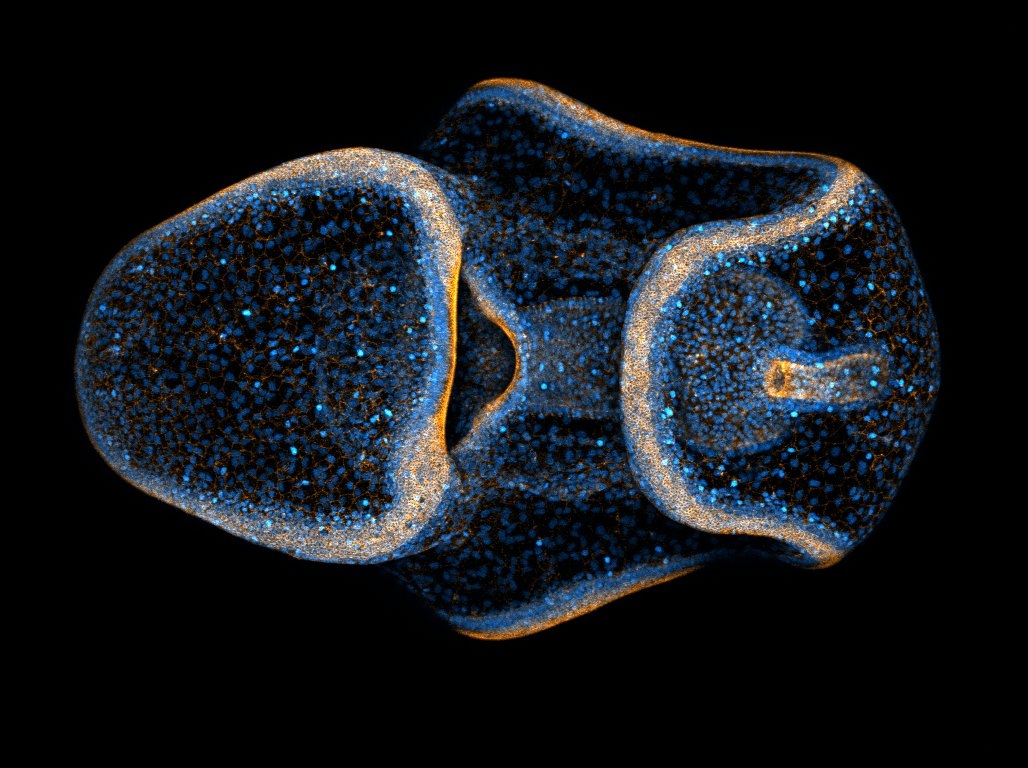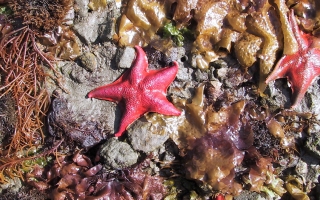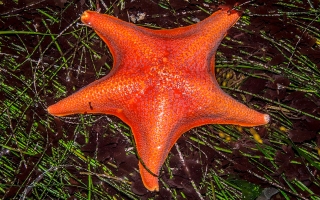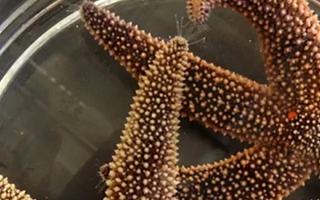Bat Sea Star

Bat stars (Patiria miniata) are named for the thick webbing between their arms that gives them a more “bat-like” appearance than other sea stars. These colorful echinoderms are most commonly seen in some shade of red or orange, but are also found in a variety of mottled colors including yellow, brown, green, pink, and purple. Like most sea stars, bat stars typically have five arms, but are sometimes born with between four to nine arms.
When a bat star finds a food item, it extends one of its two stomachs outside of its mouth cavity and using digestive enzymes, begins breaking down its prey. Eventually, the bat star pulls its stomach and partially digested prey back into its body to complete digestion.
Type: Echinoderm
Habitat: Inter-tidal zones
Range: Pacific coast of North America
Life Span in the Wild: unknown for certain, but at least several decades!
Size: Usually 4-5 inches but can reach up to 8 inches
Weight: 250 grams on average
Diet: Omnivore and a scavenger
Status: Not Evaluated
Bat stars have an unusually long breeding season. Males and females discharge fertile sperm or eggs all year long, but more abundantly during the late winter and spring. Females release millions of eggs into the ocean through the pores between their arms and the males release a cloud of sperm. Once fertilized, bat star eggs quickly develop into embryos and then tiny free-swimming planktonic larvae. These larvae have strong regenerative capabilities, such as regrowing missing body parts if cut in half.

Scientists at the MBL and around the world study bat stars to learn more about embryonic development, reproduction, and regeneration. The Swartz Lab at the MBL studies sexual reproduction and development in P. miniata, and its relatives as a window into understanding human health and fertility.


